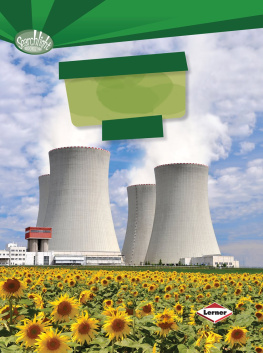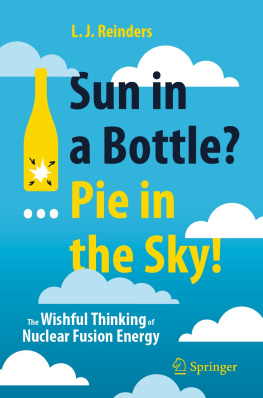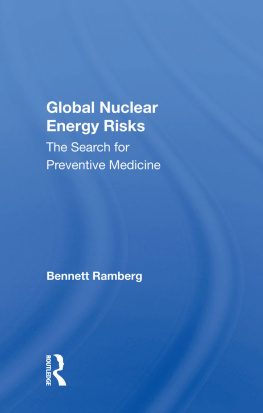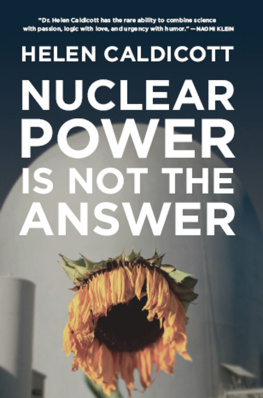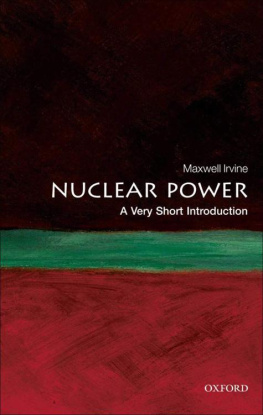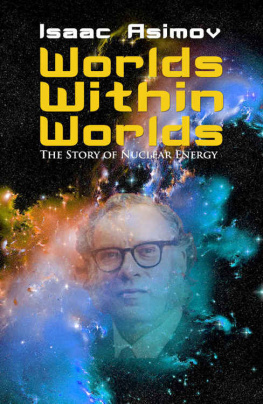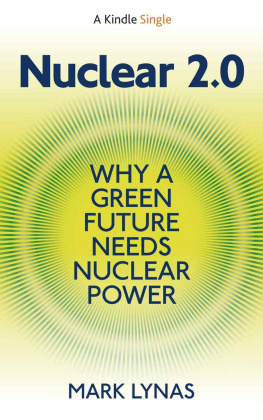INTRODUCTION: GWYNETH'S PILGRIMAGE
Richard Rhodes
GWYNETH CRAVENS EVOKES AN old tradition in this very modern book: seeking understanding by going on a journey. In John Bunyan's Pilgrim's Progress, published in the 1660s during the English Restoration, a seeker named Christian encounters the Slough of Despond, the House Beautiful, the Valley of the Shadow of Death, Vanity Fair, and Doubting Castle, among other challenges, before he finally achieves the Celestial City. Cravens encounters similarly colorful places: abandoned mines that breathe radon; laboratories where nuclear reactors were deliberately melted down; a hellish place of heat, coal dust, and shattering noise; quietly vigilant nuclear power plants; vast humming turbines; a giant crystal called WIPP; Yucca Mountain. She accumulates knowledge as she goes, guided by her own Virgil, a steadfast scientist named Dr. Rip Anderson. She achieves greater understanding of the deep things of the world, as her predecessors did, and as they also did, she shares it generously.
Unlike the chronicles of those ancient worthies, however, Gwyneth's narrative is factual, not allegorical, a tour from discovery to mining to waste disposal of a modern technology, nuclear power, that harnesses the first major source of energy that does not depend, directly or indirectly, on the sun. Nor did she begin her journey, as Bunyan did, with an ax to grind. If anything, she was antinuclear. Her journey to knowledge changed her perspective.
I had a similar experience when I began writing about energy issues for national magazines back in the 1970s, in the years of the Arab oil embargo and the ensuing energy crisis. I was as reflexively antinuclear in those days as too many of my colleagues continue to be today. Then I researched and wrote my book The Making of the Atomic Bomb. In the course of doing so, I got to know the extraordinary men and women who developed the science of nuclear physics, many Nobel laureates among them, and learned to my surprise that they looked at nuclear energy very differently from their perspective of firsthand knowledge than I did from my perspective of secondhand ignorance. I asked them questions, I read their work, I visited laboratories and power plants, I researched and wrote a book-length history of the development of nuclear power in the United States, and what I learned changed my mind. I came to understand that nuclear power is one of the best solutions to environmental public health problems, as well as a necessary and probably central part of any effort to reduce global warming.
Energy transitions take time. One example is the historic substitution of coal for wood, which was fundamental to the Industrial Revolution. Coal had been known and used for three thousand years, but only marginally The inhabitants of sixteenth-century London, however, suffered from a problem familiar to conurbations in developing countries today: as the city grew, a greater and greater area around it became deforested, and as transportation distances increased, wood became more expensive. The poor had to switch to coal; the rich followed later.
A second major energy transition originated in the United States. In the mid-nineteenth century, petroleum was first used as a substitute for whale oil for illumination in the form of kerosene. At the beginning of the twentieth century, coal still accounted for more than 93 percent of all mineral fuels consumed in the United States, and electric light was rapidly displacing the kerosene lantern in urban America, with eighteen million lightbulbs in use by 1902. Large oil fields were discovered in Texas and California early in the century. Railroads in the West and Southwest almost immediately converted to oil burning because local oil was cheaper than distant coal when transportation costs were figured in. That conversion prepared the way for the use of gasoline in automobiles.
The emergence of nuclear power in the twentieth century has been haunted by preadaptation. In the United States, the Soviet Union, Britain, France, and China, nuclear reactors were developed first of all to breed plutonium for nuclear weapons. The development of power reactors was delayed in the years immediately after the Second World War because everyone involved in the new atomic energy enterprise believed that high-quality uranium ore was too rare in the world to be diverted from weapons production. Early in the 1950s the U.S. Atomic Energy Commission even considered extracting uranium from coal fly ash, where burning had concentrated coal's natural complement of uranium. Well into that decade, almost the entire U.S. production of uranium and plutonium was dedicated to nuclear weapons. Finally the federal government offered bonuses to uranium prospectors for high-quality finds and the prospectors unearthed the extensive uranium resources of the Colorado Plateau.
Another delay arose from concerns for secrecy. The Atomic Energy Act of 1946 made atomic energy an absolute monopoly of the federal government. All discoveries were to be considered born secrettreated as secret until formally declassifiedand the penalty for divulging atomic secrets was life imprisonment or death. All uranium and plutonium became the property of the government, as beached whales once became the property of kings. No one could build or operate a nuclear reactor except under government contract, nor could one be privately owned. These restrictions and mind-sets had to be revised before utilities could own or build nuclear power stations.
It's clear in hindsight that the careful evolutionary development of nuclear power in the United States, including the types of reactors developed and the nurturing of a solid political constituency, was a casualty of the cold war. Early in the 1950s, the Soviet Union announced a power reactor program, and by then the British were developing a power reactor fueled with natural uranium that countries without enrichment facilities might want to buy. In both cases Congress feared the United States might be left behind. It amended the Atomic Energy Act in 1954 to allow private industry to own and operate reactors, and government-subsidized construction began on a 60-megawatt demonstration plant at Shippingport, Pennsylvania, the same year. The reactor was a modified Westinghouse Large Ship Reactor, a system under development at the time to power aircraft carriers. Naval reactors use highly enriched, weapons-grade uranium for fuel and water as a heat-transfer agent; Admiral Hyman Rickover, who shepherded the early development of navy and civilian power reactors, sensibly but daringly decided to use low-enriched uranium oxide in the civilian reactor to lessen the risk that the fuel could be diverted and used to make bombs.


